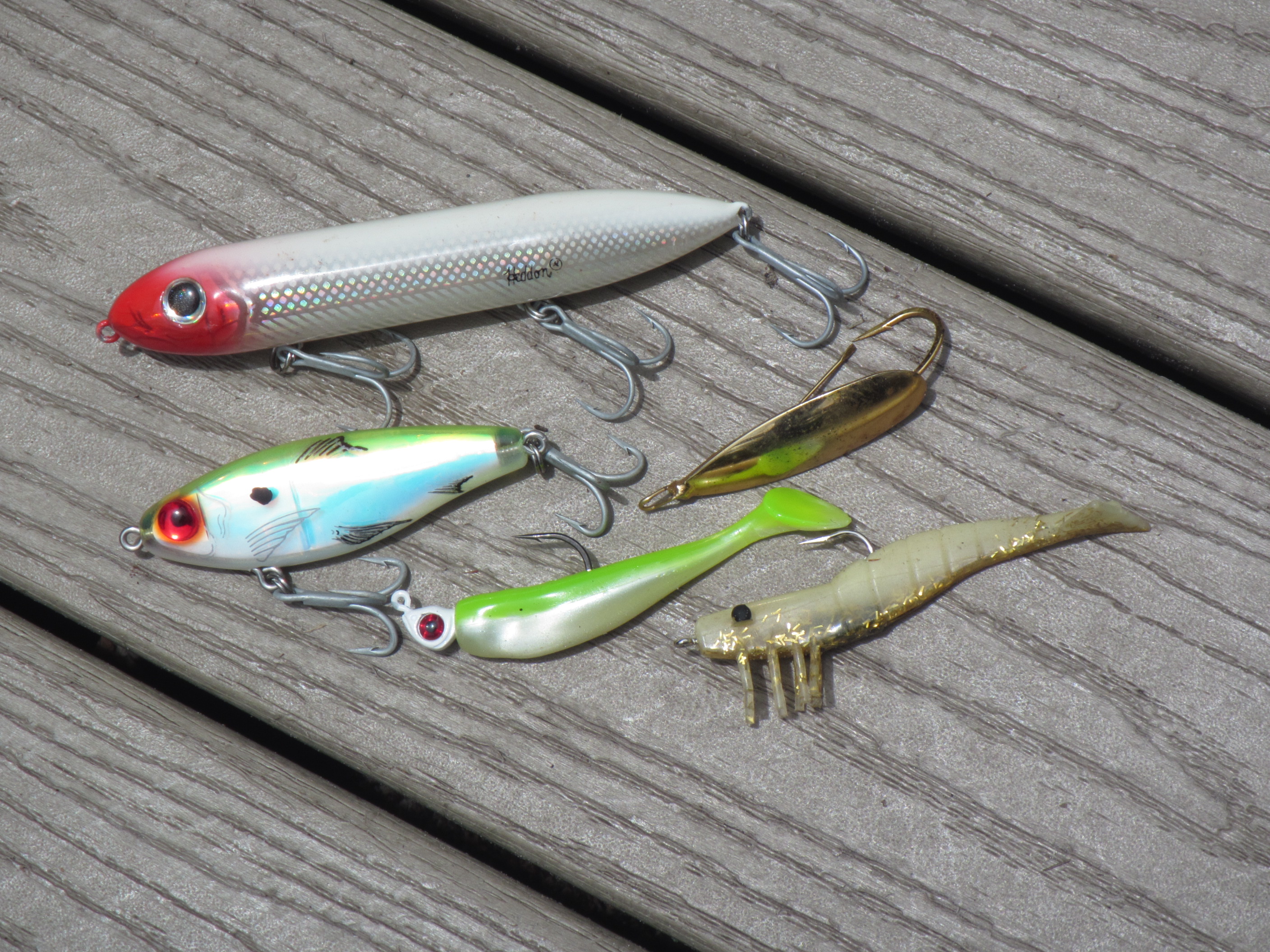
Most experienced anglers will tell you that live shrimp, sardines, or pinfish offer the most consistent and user-friendly option for targeting inshore saltwater species. Not untrue, but it’s not necessarily, whole truth.
Across the board, artificial lures play a big role in the hunt for top-tier targets such a redfish, speckled trout, snook, and juvenile tarpon. Adding a bunch of peripheral species like black drum, ladyfish, and jack crevalle amplifies the artificial appeal.
But that’s just potential. Let’s look at the clear and inarguable benefits that make throwing artificials and worthwhile skill to learn.
Time Management: Keeping live baits alive requires minimizing the stress of strenuous movement. That means frequently reeling in and repositioning a bait wears it down and reduces its appeal.
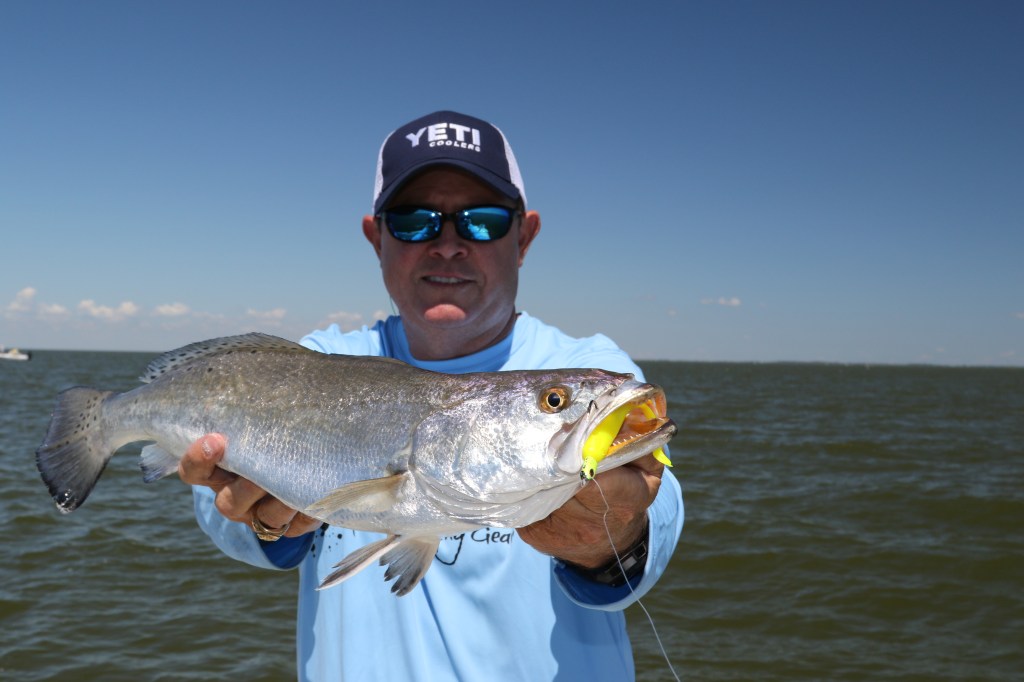
Conversely, baits made of plastic and/or metal can handle lots of repetitive casts. In fact, the more you cast, the more water you can cover and the quicker you’ll find active fish.
Note: Even when you’re live baiting, it’s wise to keep one or more artificial lures handy for quick, accurate casts to unexpected targets. Maybe a fish boils or busts near you, or perhaps you spot a fish outside your live bait casting range.
Remaining ready to capitalize on whatever a day offers defines angling preparation.
No Waiting: Whether you stop at a bait shop to buy your livies, or you throw a castnet to capture the day’s supply, you’re taking time out of your morning. The tradeoff often works well if you know exactly where to find active fish, but if you do not, actively searching with artificials often proves more productive.
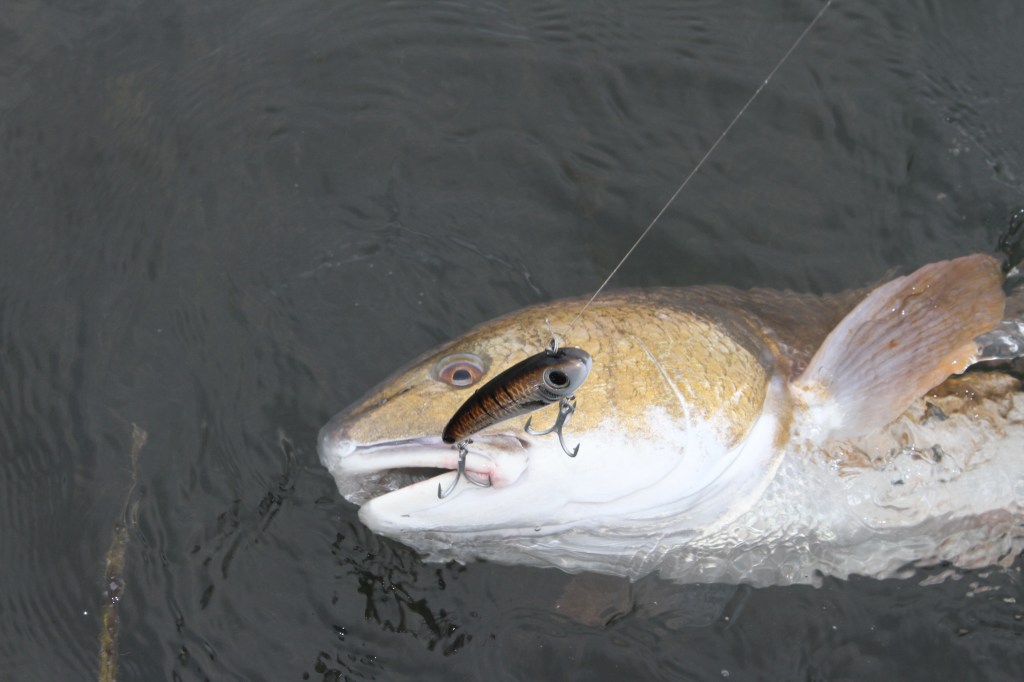
With artificials, you’re ready to go as soon as you reach the water. Moreover, after a bite or a catch, you don’t have the process of grabbing and hooking another bait.
Clean and Neat: Don’t feel bad if touching live baits or putting them on a hook is not for you. However, artificial baits remove that concern and allow you to throw-and-go at your own pace. This also eliminates the need for a live well or bait bucket.
Diversity: In fairness, live baiting is not one-dimensional. You can free line baits, add a split shot for deeper water, or fish them under a cork to avoid snags and keep them in a particular area.
With artificials, you can cover the water column from the sand to the surface, present several different looks and tempt fish with multiple retrieve rates. You can quickly change with time of day, weather conditions and fish activity, whereas a shrimp’s a shrimp and a sardine’s a sardine regardless of the day’s look.
Starting Lineup
Specific needs vary by location and daily conditions, so diverse tackle selections prove helpful. However, if you’re just starting out, or if budgets are tight, this roundup will keep you in the hunt for a variety of inshore faves.

Topwater Walker
Generally cigar shaped with two or three treble hooks, topwaters like the MirrOlure Top Dog, Rapala Skitterwalk, LIVETARGET Mullet, and Heddon Saltwater Super Spook mimic baitfish swimming at the surface. That could be finger mullet swimming along naturally, or a wounded baitfish struggling to submerge. Either way, if you think of the surface as a football field’s sideline, a predator can pin its prey against this boundary for an easy meal.
Try the standard walk-the-dog retrieve (slow steady reeling with an even cadence of rod twitches), or throw in some erratic bursts and pauses to stir up interest. Sometimes, you can turn a looker into a biter by simulating a startled baitfish.
If a fish strikes and misses, stop the retrieve and dead stick the topwater bait. Wait a few seconds, then make a couple small twitches. If a predator thinks it stunned or killed a baitfish and that meal suddenly starts moving, they’ll aggressively attack to make sure their meal does not escape.
Keep in mind that, while jumbo topwaters may tempt jumbo fish, plenty of big trout, snook and redfish fall for modest size surface baits. Further, in shallow, clear water, or dead calm conditions the cannonball splash of a big topwater will spook fish before you have any chance of tempting them.
Try smaller versions like the MirrOlure Top Pup or the Super Spook Jr., which create less commotion, but still put off that tantalizing display.
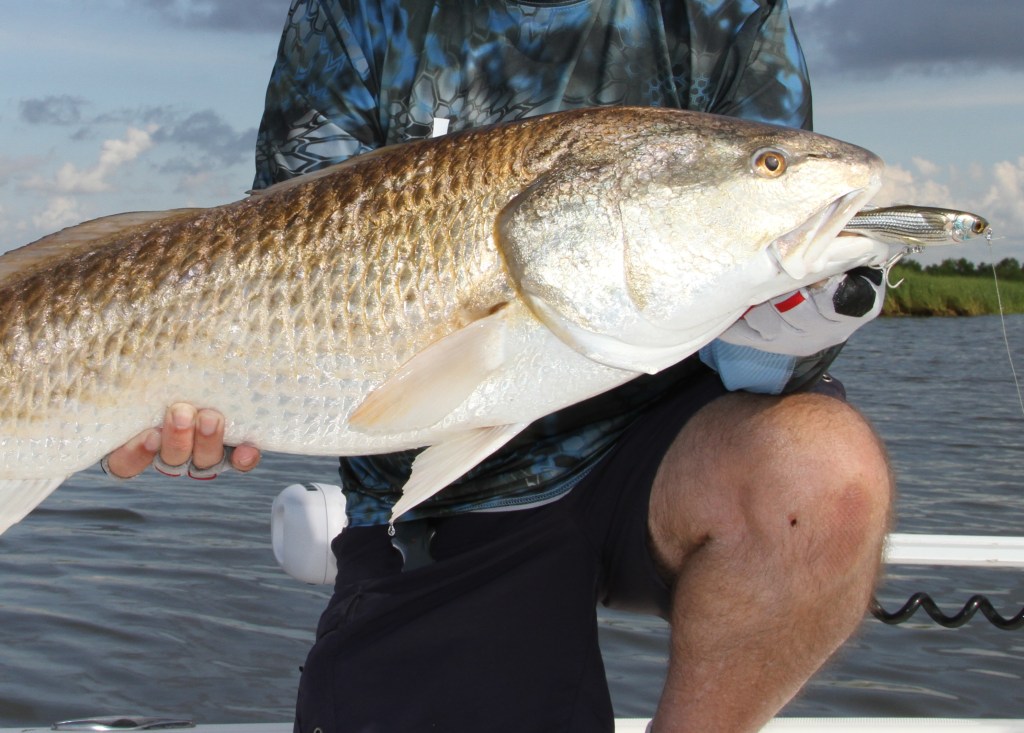
Twitchbait
Subsurface suspending or slow-sinking hard baits like the Yo-Zuri 3DB Inshore Twitchbait, the Bomber Saltwater Grade Badonk-A-Donk and Mullet, or MirrOlure MirrOdine offer an effective tool for imitating baitfish dashing across grass flats, potholes, or deep channels. Use a varied cadence of twitches and pauses until you determine what the fish like that day.
Spoon
The classic weedless gold spoon, like a Johnson Silver Minnow is the 4-wheel drive bait for redfish anglers. Designed to run with its metal back facing downward, a spoon mostly keeps its hook out of snag range, while bumping across oyster bars and rocky bottom or zipping through scattered grass.
Also, treble hook spoons such as the Acme Kastmaster Spoon or Luhr Jensen Crocodile Spoon are very effective for deeper, open-water scenarios, including surf casting.
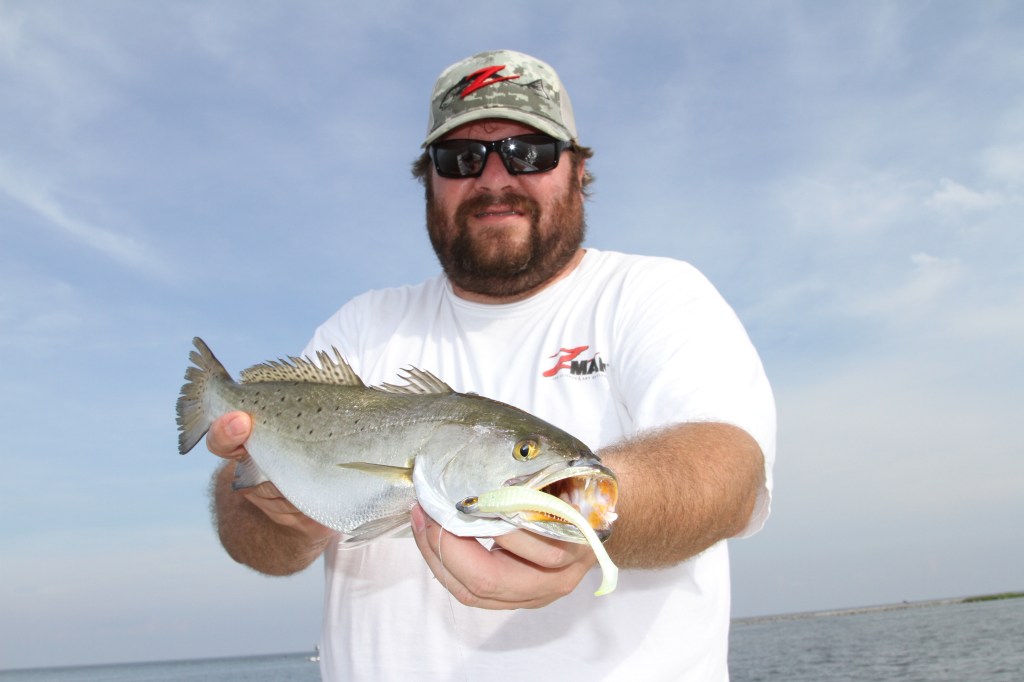
Lead Head Jig
Standard issue for most southern saltwater anglers, jig heads like Z-Man’s Trout Eye Jig, DOA’s C.A.L. Jig Head or Mustad’s Inshore Darter Jig Head allow you to quickly change between various paddle tail, curly tail, or swimbait bodies. Here again, it’s about responding to what the day presents, whether that’s weather and water conditions, or fish behavior.
Keep several jig head sizes handy — 1/8- to 1/2-ounce — for various depths. Also, one of the old-school strategies worth consideration — increase the appeal during slow tidal periods or midday heat by tipping your jig with a small piece of cut shrimp.
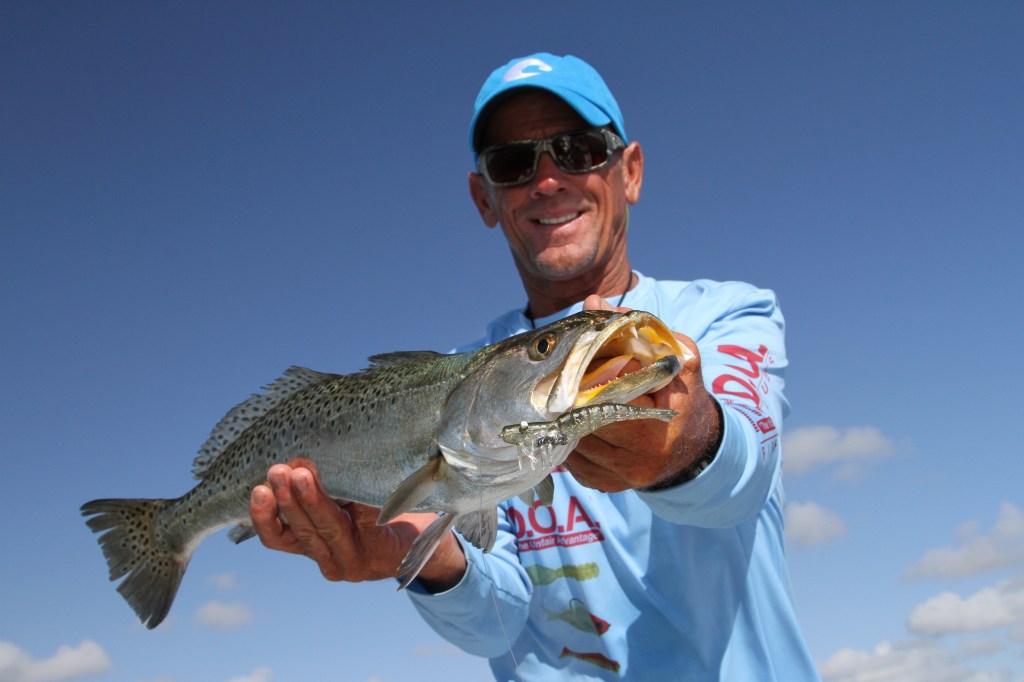
Artificial Shrimp
From the original DOA Shrimp to Egret Baits’ Vudu Shrimp, Strike King’s Tidal Shrimp, or the scented Berkley GULP! Shrimp, imitating the sea’s most popular forage rarely disappoints. Some, like the DOA, LIVETARGET’s Rigged Shrimp and Z-Man’s EZ ShrimpZ Rigged come with a built-in weight and hook, while others require a jig head.
Same as the lead head jigs, cast and retrieve your shrimp imposters at various speeds. Consider that shrimp spend a lot of time hovering and feeding, so give the bait plenty of pauses, but if you see predator fish approaching, give your bait a burst of erratic, evasive twitches because — that’s what a real shrimp would do.
Whatever your choice, you can count on artificial baits to deliver very real results.



